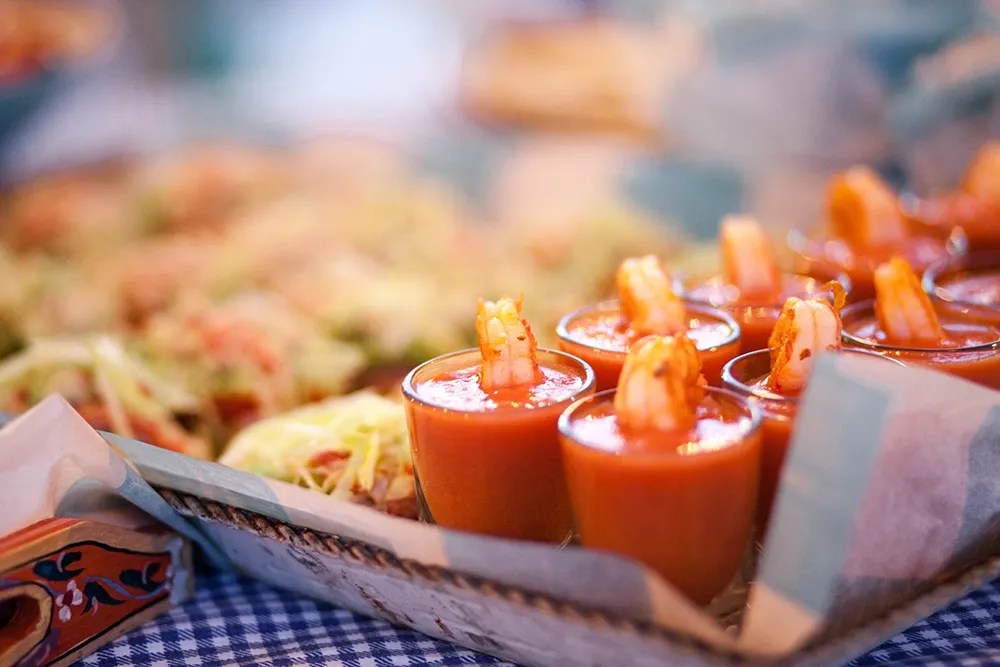Embarking on a yacht charter adventure promises stunning horizons, azure waters, and unforgettable memories. Yet behind every exceptional voyage lies a crucial element that can make or break your experience: the food. Whether you're cruising the Mediterranean coast or exploring Dubai's spectacular waterfront, mastering the art of yacht meal planning transforms your charter from ordinary to extraordinary. This comprehensive yacht catering guide will help you navigate the culinary waters with confidence.
Understanding Your Charter Dining Options
The foundation of successful meal planning begins with understanding which type of yacht charter experience you've booked. Bareboat charters place full provisioning responsibility on guests, offering complete control over menus and budgets. This option suits experienced sailors who enjoy selecting their own ingredients and preparing meals aboard. In contrast, crewed charters typically include a professional chef who handles everything from menu planning to preparation and service.
For those seeking the ultimate convenience, all-inclusive packages provide gourmet dining experiences without any provisioning concerns. Many luxury yacht dining experiences in destinations like Dubai and the Caribbean feature Michelin-trained chefs who create restaurant-quality meals tailored to your preferences. Understanding your charter type allows you to plan accordingly and set realistic expectations for your culinary journey.
Essential Yacht Meal Planning Tips
Successful provisioning starts weeks before departure. Begin by gathering critical information about your crew's dietary requirements, allergies, and food preferences. This collaborative approach ensures everyone feels included and satisfied throughout the voyage. Create a detailed spreadsheet listing all meals you'll need—breakfast, lunch, dinner, and snacks—based on your charter duration and the snacks you can carry on your yacht charter.
One of the most effective yacht meal planning tips involves organizing your shopping list by storage categories: refrigerated items, frozen goods, pantry staples, and fresh produce. This systematic approach streamlines both shopping and loading processes. Calculate quantities carefully, accounting for the number of guests and trip duration. As a general rule, plan for slightly more than you think you'll need, but avoid over-provisioning, which leads to waste and storage challenges.

Consider the rhythm of your voyage when planning meals. The first few days at sea often require simpler preparations as crew members adjust to the motion. Pre-cooked meals or one-pot dishes work exceptionally well during this adjustment period. Reserve more elaborate cooking projects for calmer days when everyone has found their sea legs and can fully appreciate the culinary efforts.
Strategic Menu Development Before Trips
A well-designed yacht menu planning guide balances variety with practicality. Focus on versatile ingredients that serve multiple purposes across different meals. Fresh pasta, for example, can become the foundation for numerous dishes, while chicken can be grilled, baked, or incorporated into salads and sandwiches. This approach maximizes your limited galley space while minimizing waste.
Prioritize meals based on ingredient perishability. Consume fresh produce, dairy products, and meats early in your voyage, transitioning to shelf-stable options as days progress. Lettuce and tomatoes should feature in first-day salads, while heartier vegetables like cabbage, carrots, and onions last considerably longer. Strategic planning ensures you enjoy fresh ingredients throughout your charter without spoilage concerns.
Don't overlook the importance of comfort food and treats. Long passages can be challenging, and favorite meals significantly boost morale. Ask guests about their top five comfort dishes before departure—the information proves invaluable when planning your provisioning list. Including individual snack packs for each crew member prevents conflicts and ensures everyone has personal favorites to enjoy throughout the journey.
The Art of Storage, Preservation and Organization on Yachts
Efficient storage makes or breaks galley operations. Heavy items belong low and centered to maintain vessel stability. Store durable goods like bottled water and canned beverages in bilges, reserving accessible lockers for frequently used items. Label everything clearly, including removing paper labels from cans that might be stored in potentially damp areas to prevent clogging bilge pumps with soggy paper.
Create a stowage map documenting where items are located. This proves particularly helpful when multiple people share cooking responsibilities. Vacuum-sealed bags maximize freezer efficiency while protecting food from moisture and salt air. Airtight containers preserve pantry staples and prevent pests—cardboard packaging should remain on the dock to avoid introducing unwanted guests aboard.
Temperature monitoring equipment helps track refrigeration performance. Always have contingency plans for equipment failures. What happens if your freezer stops working or water tanks become contaminated? Backup options like additional bottled water and shelf-stable alternatives ensure you're never caught unprepared.
Elevating Your Yacht Dining Experience
For those seeking exceptional culinary experiences without provisioning stress, professional yacht catering services offer compelling solutions. Many charter destinations, particularly private yacht rental Dubai locations, provide access to specialized provisioning companies that deliver fresh, high-quality ingredients directly to your vessel. These services often include menu planning assistance from experienced professionals who understand yacht galley limitations and capabilities.
Gourmet meals for yacht trips need not be complicated. Simple preparations using premium ingredients often outshine elaborate dishes that stress galley resources. Grilled fresh fish with seasonal vegetables, pasta with quality olive oil and herbs, or perfectly prepared steaks demonstrate that elegance lies in execution rather than complexity. Many successful yacht chefs embrace one-pot meals and dishes requiring minimal cleanup, allowing more time for enjoying the voyage.
Consider incorporating local flavors and ingredients from ports of call. Fresh seafood purchased at morning markets, regional cheeses, and locally baked bread transform meals into memorable cultural experiences. This approach also reduces advance provisioning needs while supporting local communities.
Practical Provisioning to Take Care of Needs
Water management deserves special attention. Calculate at least one gallon of drinking water per person daily, plus additional supplies for cooking and cleaning. Many modern yachts feature watermakers, but backup bottled water provides security against equipment failures. Remember that dehydration accelerates in sun and salt air environments.
When developing your yacht charter food guide, account for eating ashore. Most charters include at least a few restaurant meals, reducing onboard provisioning requirements. Research dining options at planned destinations and incorporate these into your overall meal plan. This balanced approach provides variety while relieving pressure on galley operations.
Don't forget non-food essentials: quality spices, cooking oils, aluminum foil, storage bags, paper towels, dish soap, and trash bags. Charter boats typically arrive with minimal supplies. Confirm what's provided with your charter company and plan accordingly.
The Path to Charter Dining Success
Successful yacht meal planning combines practical organization with culinary creativity. Start with thorough assessment of dietary needs, preferences, and trip duration. Develop structured meal plans that account for ingredient perishability and cooking complexity. Organize provisioning lists by storage type and create detailed stowage maps.

Whether you're managing provisions independently or working with professional catering services, the goal remains constant: ensuring every meal contributes to your charter's overall success. With proper planning and these proven strategies, you'll spend less time worrying about food and more time savoring the incomparable experience of life afloat.
The art of yacht provisioning may seem daunting initially, but with practice and these guidelines, you'll develop systems that work perfectly for your style of cruising. Remember that every voyage teaches valuable lessons. Keep notes about what worked well and what you'd change for next time. Before long, you'll provision with the confidence of seasoned sailors, ready to enjoy spectacular meals against even more spectacular backdrops
FAQs
- Who handles the meal planning and provisioning?
This depends on if you have a chef or not. If you do, you can simply highlight preferences and discuss other information. Otherwise, you’d have to do all the planning. A better option would be to make these arrangements with your charter company.
- What information should I provide about food preferences?
Be clear. Communicate restrictions about allergies and others in advance, and include everyone in your meal plan.
- What kind of meals can I expect?
A chef can always cook an array of meals depending on your preferences. If you’re dining ashore, then local restaurants would be your go-to.
- What is the cost of food on a charter?
This would depend on your charter arrangement or you’ll pay for your provisions as you’re buying them.








